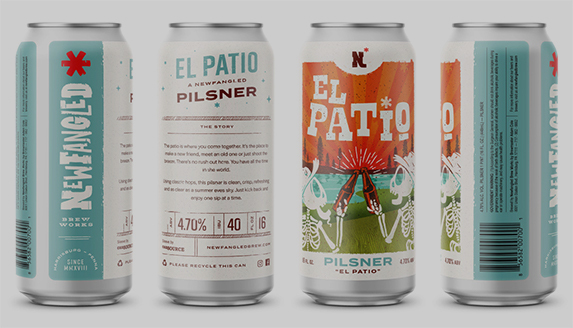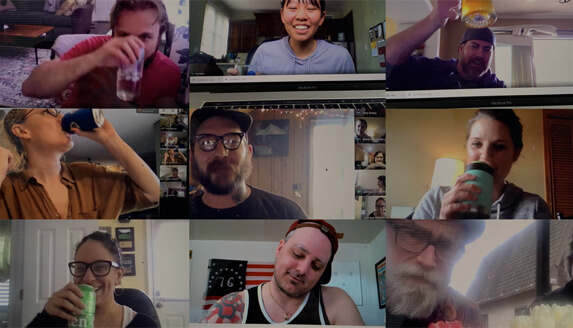How Food Trends Are Being Affected by the Coronavirus Pandemic

The coronavirus has rattled the nation: the restaurant industry is on its head, supply chains are disrupted, and tens of millions of pounds of produce and dairy are being destroyed by farmers. 2020 turned the food and beverage industry upside down; however, the three to five-year industry trend predictions outlined in our 2020 quench Food & Beverage Trends, Vol. 11 remain strong. Here’s how the pandemic is affecting the future of food – and quench’s 2020 food and beverage trends.
Back to Nature
Everyone from restaurants to grocery stores are beginning to grow their produce in-house, and consumers and chefs alike go to unusual means for food that is as natural as possible. Back to Nature tracks the rise of wild, foraged food; the garden-to-table movement; and the return of all things sour and bitter.
The processed, prepackaged and shelf-stable are back in vogue as consumers stock up on pantry staples and return to trusted favorites; exploring new and unusual fresh produce would seem to be the last thing on everyone’s mind. While unable to eat out and explore this trend at restaurant tables, consumers take it into their own hands.
Urban farming has flourished during the outbreak as consumers look to supplement their usual intake: The New York Times tracked the resurgence of World War I “Victory Gardens”; Google searches for the term “home farming” jumped 50 percent in March; “how to raise chickens” spiked 75 percent.
Altruistic Food
Brands’ extensive adoption of corporate social responsibility (CSR) initiatives led to a shift in consumers’ perception of brands from just another name on the shelf to agents of legitimate change.
The coronavirus caught the United States unawares and revealed cracks in the system. As governmental agencies struggle to meet rising demands for assistance, companies are stepping up to lend a hand.
Everyone from beauty brands Estee Lauder and L’Oreal to alcoholic beverage companies Molson Coors and Pernod Ricard are producing sought-after hand sanitizer, while others like Proctor & Gamble and Nike focus on donating masks. Others identified fiscal donations as the best support: Unilever alone donated more than $500 million in supplies and cash flow relief.
Disaster Farming
The world’s food system is desperate for an overhaul: Research shows that the world can only grow enough fresh fruit and vegetables to feed two-thirds of the current global population. Industrial agriculture will need to examine alternative solutions like urban farming and new sources of traditional staples.
As scientists, politicians and industry leaders debate issues of sustainability and overpopulation, coronavirus sped up the conversation. The virus expedited the experience of living in shortage, leaving consumers and producers alike scrambling to address fractured supply chains.
As the virus halted the movement of people from one country to another, farmers need to contend with how to pick their produce without migrant workforces. Urban agriculture serves as a critical tool in the toolbox, producing millions tonnes of food a year and utilizing robotic workers to pick the results of that labor: Companies like Infarm and FreshBox Farms thrive in confined spaces and require minimal human interaction.
Restaurants without Restaurants
Ecommerce and digital ordering have changed the shape of the restaurant industry. Developments in delivery and retail aim to redesign – or eliminate – the in-store experience.
Grocery stores remain open during the pandemic; however, many consumers forgo in-store and opt for Instacart or Peapod. Coronavirus accelerated the timeline for acceptance of ecommerce and grocery delivery by the masses, laying the foundation and investment for more and more delivery-centric services.
Retailers experienced a year’s worth of growth in a matter of weeks, and the rate of interest in shopping online is expected to continue: In the two weeks ended March 21, more than a third (35 percent) additional individuals shopped online for CPG items compared with a typical week. According to Nielsen historical data, once a shopper tests online shopping, the buyer tends to stay engaged.
Click here to get a copy of our full 2020 quench Food & Beverage Trends Report.
Want to learn more about Pavone Group, our work and our people? Visit the Pavone Group Newsroom for news and other agency announcements. Want to join the Pavone Group team? Visit our Careers page!


